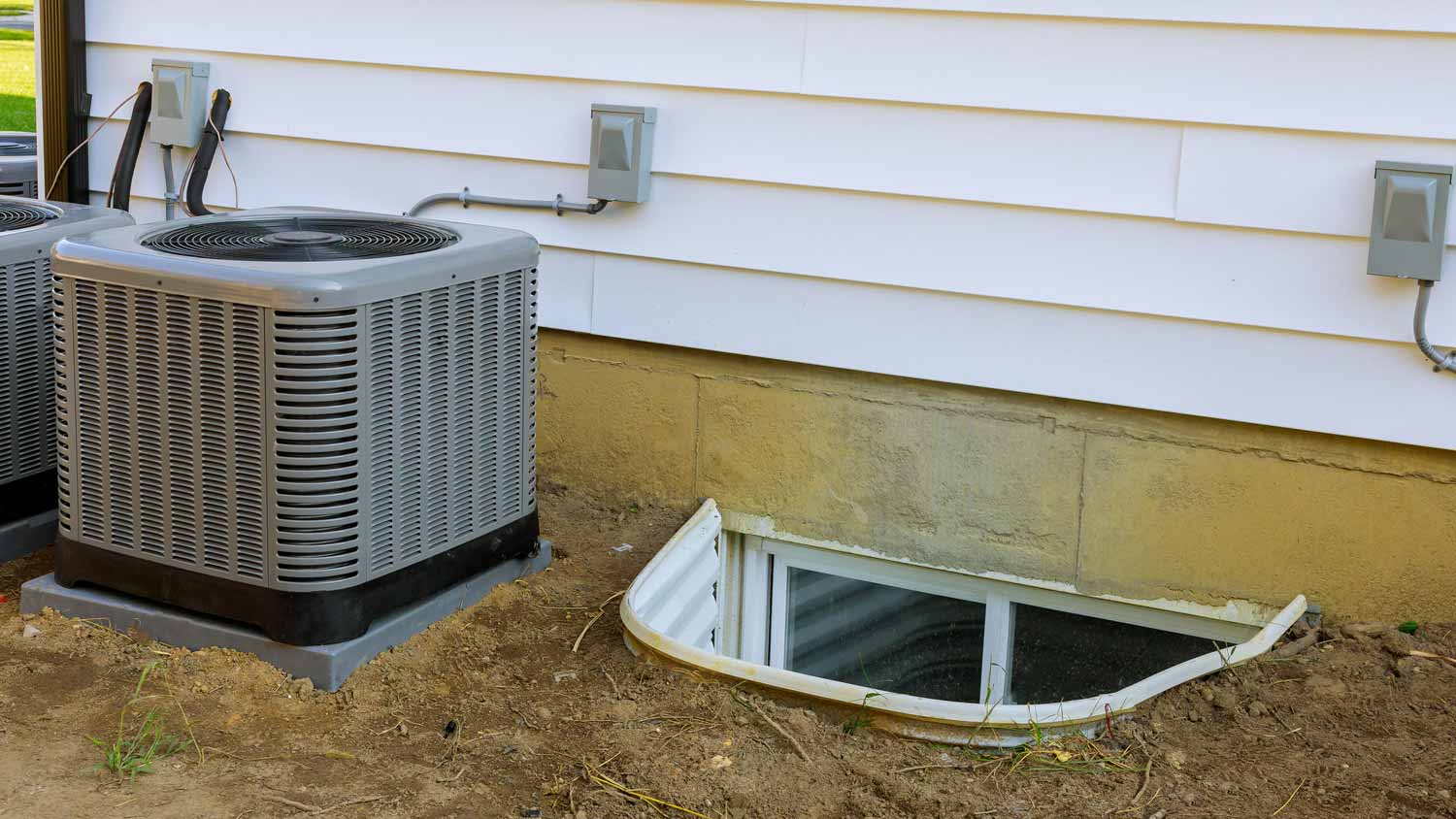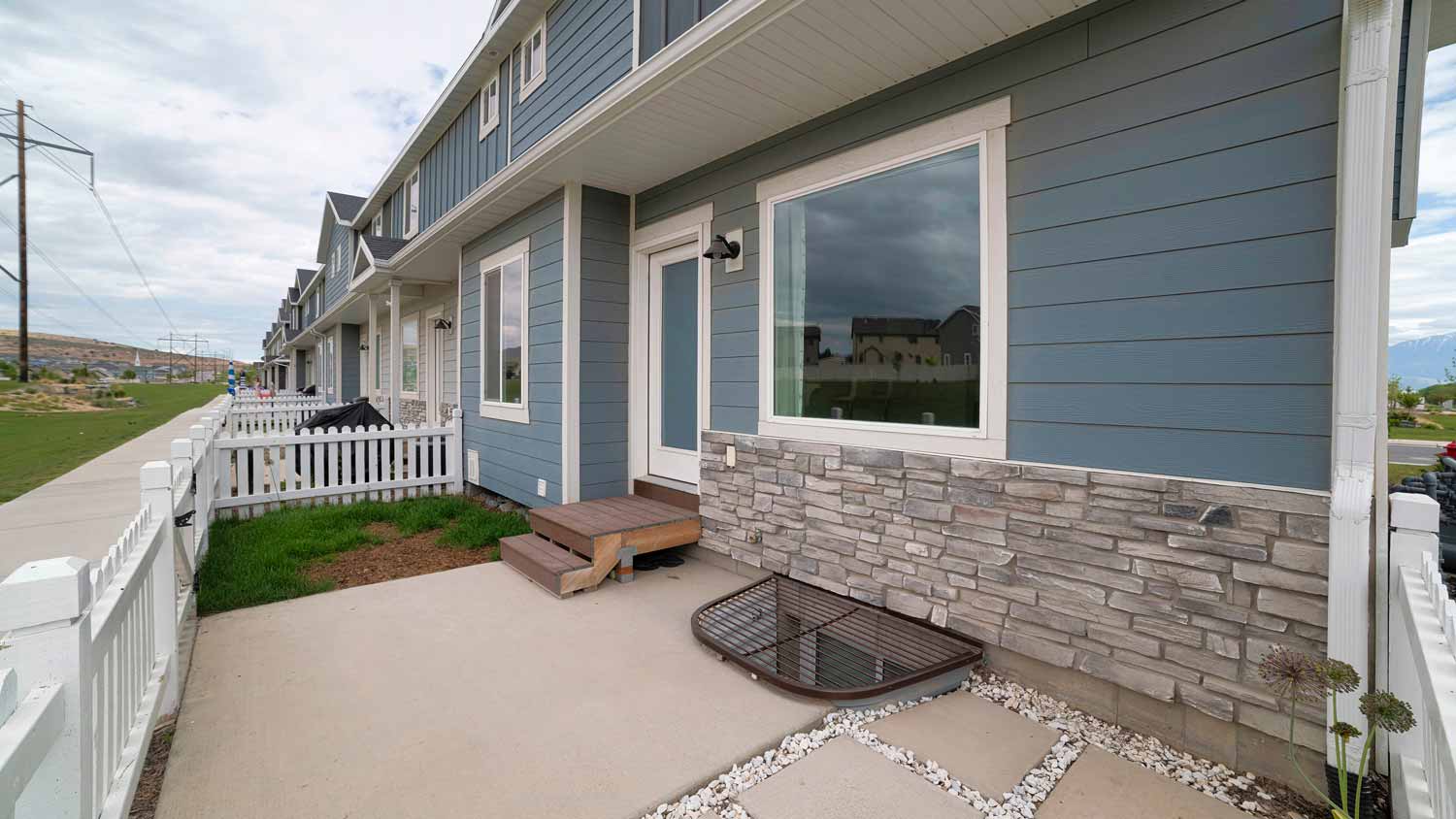
If you're hoping to add a touch of timeless style to your windows, take a look at the cost of stained glass windows and what affects installation costs.
Stop drainage problems before they lead to a flooded basement


A window well is the excavated area around basement windows.
Window wells are important for emergency exits.
Window well drainage problems can lead to basement leaks and floods.
Insufficient drainage systems and clogged drains are common problems.
Proper maintenance can help prevent window well drainage issues.
You head down to the basement to start a load of laundry on a dreary, rainy day, but a little splashing sound stops you in your tracks. When you notice flooding in the basement, it could be a sign that something is wrong with the window well drainage. But how can you find the problem? Read on for a guide to the most common window well drainage problems, including clogged drains, improper grading, and compacted gravel, plus the next steps you can take to solve them.

One of the most common causes of water filling in a window well and potentially flooding the basement is compacted gravel at the base of the well. The loose gravel is there to let the water slowly trickle down to the soil and out of the well. However, over time, the gravel will naturally become compacted and make it harder for water to drain through.
If your window well is flooding, check how compact the gravel is. Assuming the compacted gravel is the source of your window well drainage problems, scoop the gravel out with your hands or a shovel. Then rinse it with a hose and let it dry out before reinstalling it in the well.
Alternatively, you can dispose of the old gravel and install new gravel. A single bag of pea gravel costs between $4 and $6 at your local hardware store.
Just as your kitchen sink may clog from food buildup, the window well drain may become blocked by leaves, soil, and other sediment and debris. When the drain is clogged up, the water can’t pass through to be redirected away from the house.
If you know where the drain is, clear the area of debris from its top. If the inside of the drain is clogged, you’ll need to hire a contractor to clear it out. Once you or a contractor remove the debris, the drain should be working again.
Anyone can buy a plastic or metal window well from home improvement stores to wrap around the egress windows. While it’s great that these parts are easy to find, that also means it’s easy to accidentally buy and install the wrong size. When a window well is too small, water and soil can splash over the sides of the well and clog up the drain.
Before installing a window well, have a professional window contractor inspect the area and guide you on the correct window well size to buy. If the existing well is too small, a contractor can remove the old window well and install one better suited for your home.
The IRC egress code doesn’t require window well covers, so many people may not think to install a cover. But a well cover will help keep out debris that can clog the drain. Some models made from materials like polycarbonate may even help keep water from reaching the window well. If you don’t have a window cover, you could find yourself frequently cleaning the drain to prevent clogs.
Although well covers aren’t required, IRC does have requirements for homeowners who choose to install one. The well cover must have at least 5.7 square feet of clearance, which is the same size requirement for egress windows. This is meant to allow enough space for someone to fit through the window in case of an emergency.
The window cover must also be easy to open without keys or special tools. Children and adults should be able to open the well cover easily.
Improper grading is another common cause of a flooding basement window well. The soil surrounding the window well should slope away from it, not toward it. Even if your window well isn’t clogged or compacted and is the right size, ground that slopes toward the lip of the well can lead to faster water accumulation than the drain can handle.
Regrade the area surrounding your window well so that it slopes away from the well. You can hire a local landscaper to take care of this work; it often makes sense if regrading your whole yard. But if you only need to regrade a small area, it’s an easy weekend project. Here’s how to regrade the yard around your window well.
Most of the solutions to these common window well drainage problems can be easily solved on your own. Clogs from debris simply require you to remove the debris; if the gravel is compacted, you can loosen it yourself; and if the yard slopes toward the well, it’s a small regrading project that you can tackle with a little time and some elbow grease.
But if you tackle this work yourself, but you still notice your window well is flooding, it might be time to call in the pros. A local window repair contractor can help you determine if the window well size is incorrect—and install a new well if needed. They might also be able to recommend and install a well cover for you. On average, window well replacement costs between $1,800 and $3,000.

The best way to prevent flooding and other issues with your window well is to take action before there are any problems. Keeping up with regular maintenance can help prevent flooding around the window well and into the basement. Here’s what you can do:
Clean the drains: Clean the window well drain at least twice a year: in the spring and fall, when debris is more likely to accumulate. Keep the outside of the drain clear, and regularly inspect inside the well for signs of buildup. If you notice any debris in the well, reach in and clear it out.
Loosen the gravel: Since the gravel will settle and compact over time, preventing water from passing through the drainage system, it’s important to scoop the gravel out as needed to rinse, dry, and redistribute more loosely. (You can also replace it with new gravel, if necessary.)
Add a well cover: Well covers proactively keep debris from accumulating within the window well. You can purchase mesh, bar, or even solid well covers at your local home improvement store or online. Just make sure the cover will fit and meet all IRC requirements.
Stay on top of yard maintenance: Mow your lawn regularly, and keep an eye on the area around the window well, particularly after heavy rainfall. If the stormwater is causing the earth to build up around the window well, shovel it away and consider properly regrading your yard to discourage water from flowing toward the window wells and your home’s foundation. Here’s who to hire to regrade your yard if you need professional assistance.
From average costs to expert advice, get all the answers you need to get your job done.

If you're hoping to add a touch of timeless style to your windows, take a look at the cost of stained glass windows and what affects installation costs.

Discover the energy-efficient window costs. Learn about installation prices, cost factors, and tips to save money on your window upgrade.

Bigger windows mean more natural light in your space and better views of the outdoors. Learn about the cost to enlarge windows and what affects your total.

Window film, inserts, treatments, and more can improve your window’s energy efficiency. Read this guide to learn how to make old windows more energy-efficient.

What is a window sash? Learn why this feature for letting in fresh air can make or break the rest of your window.

Your home may have vintage windows or old windows that no longer function. Learn about the types of old windows and when to replace them.